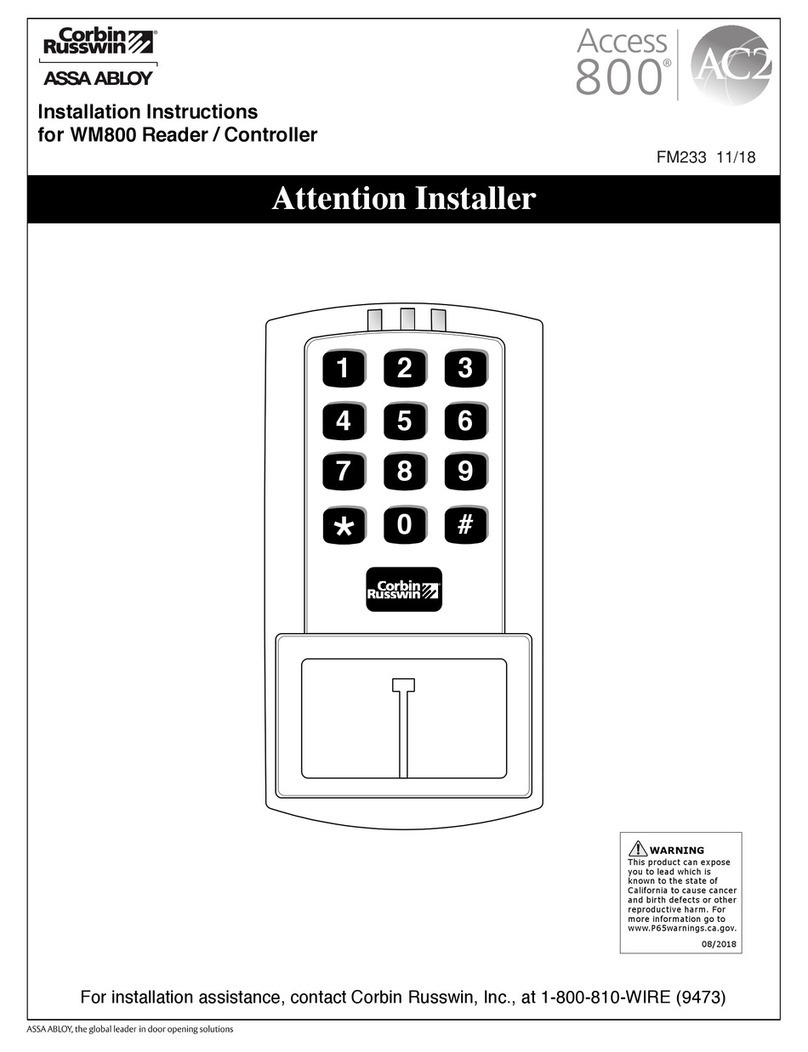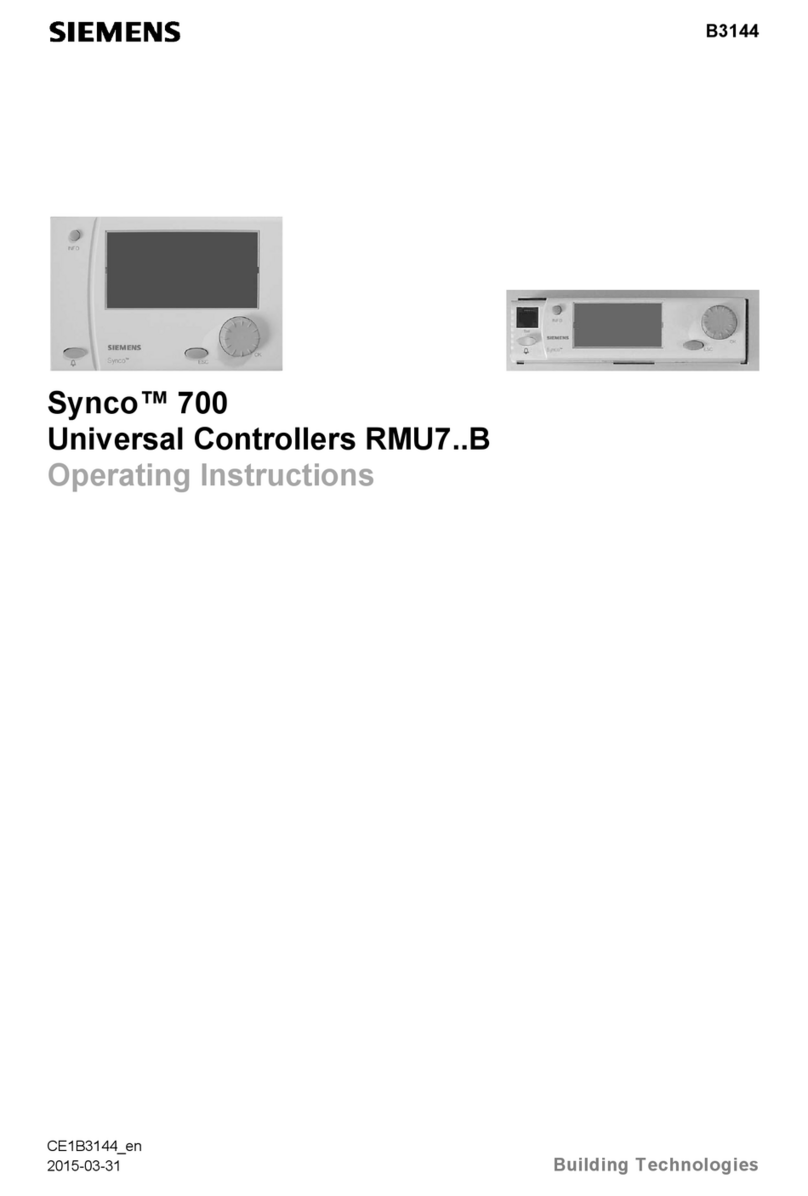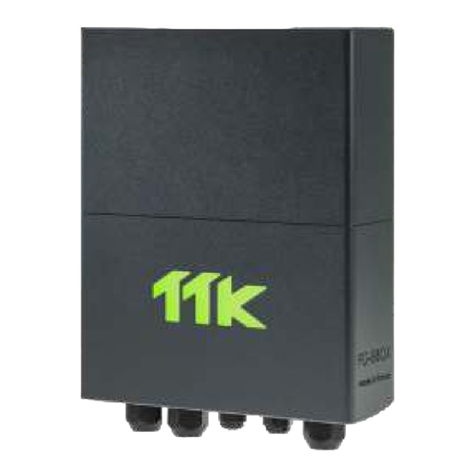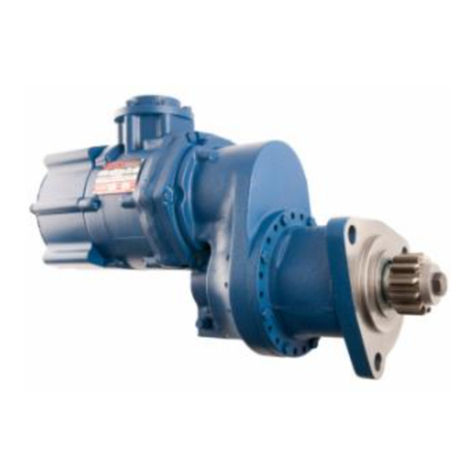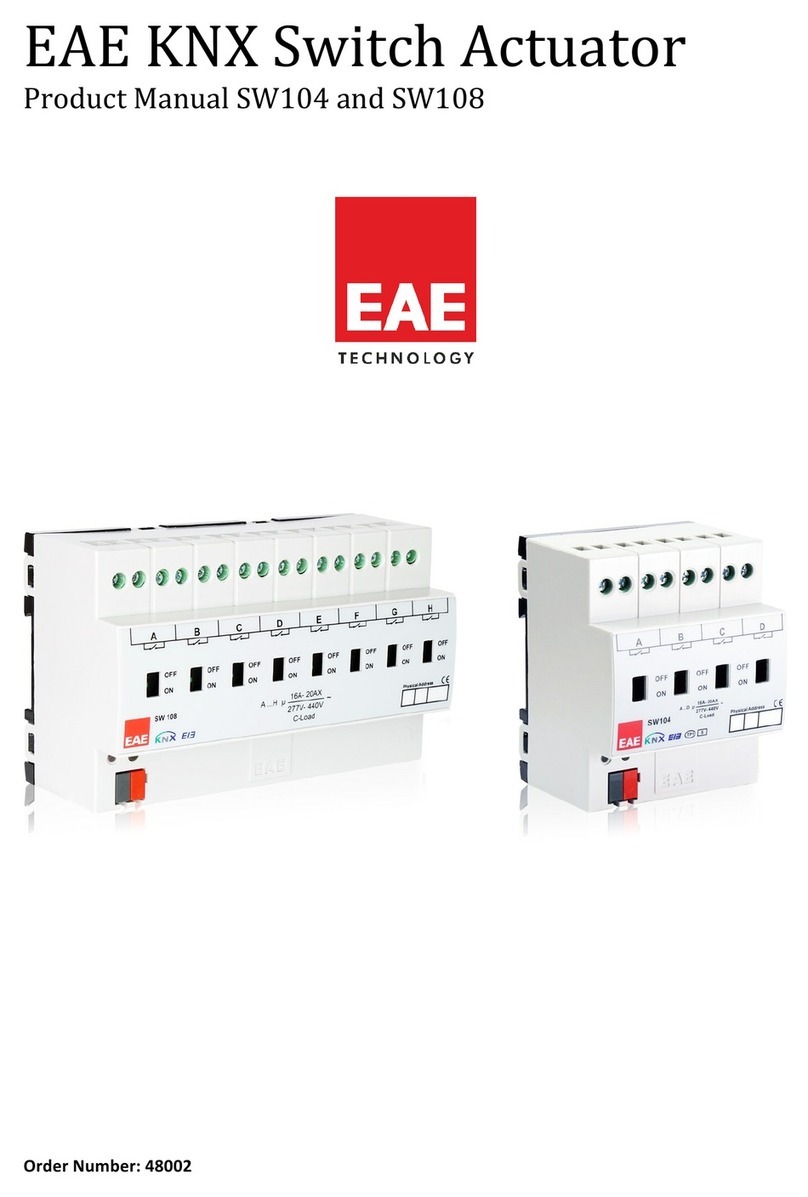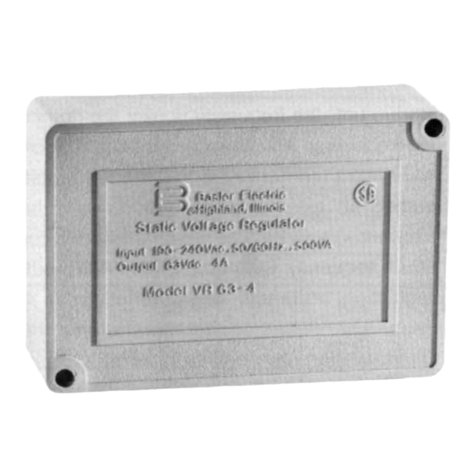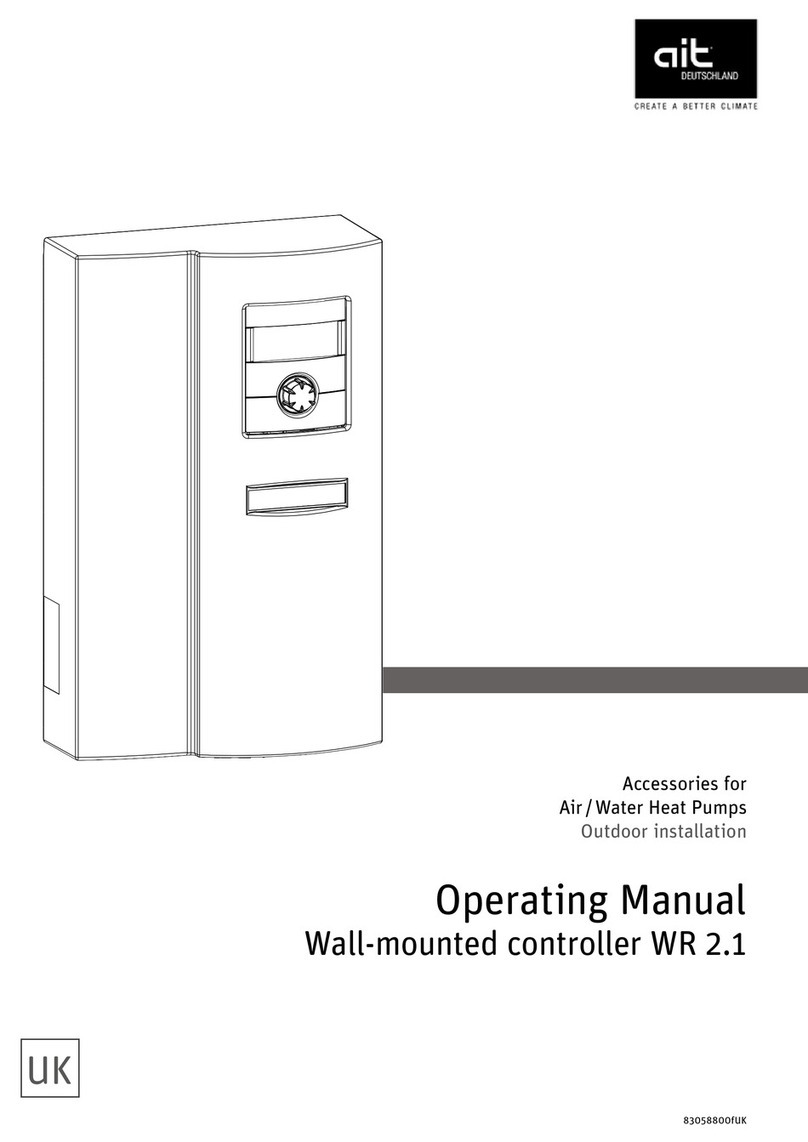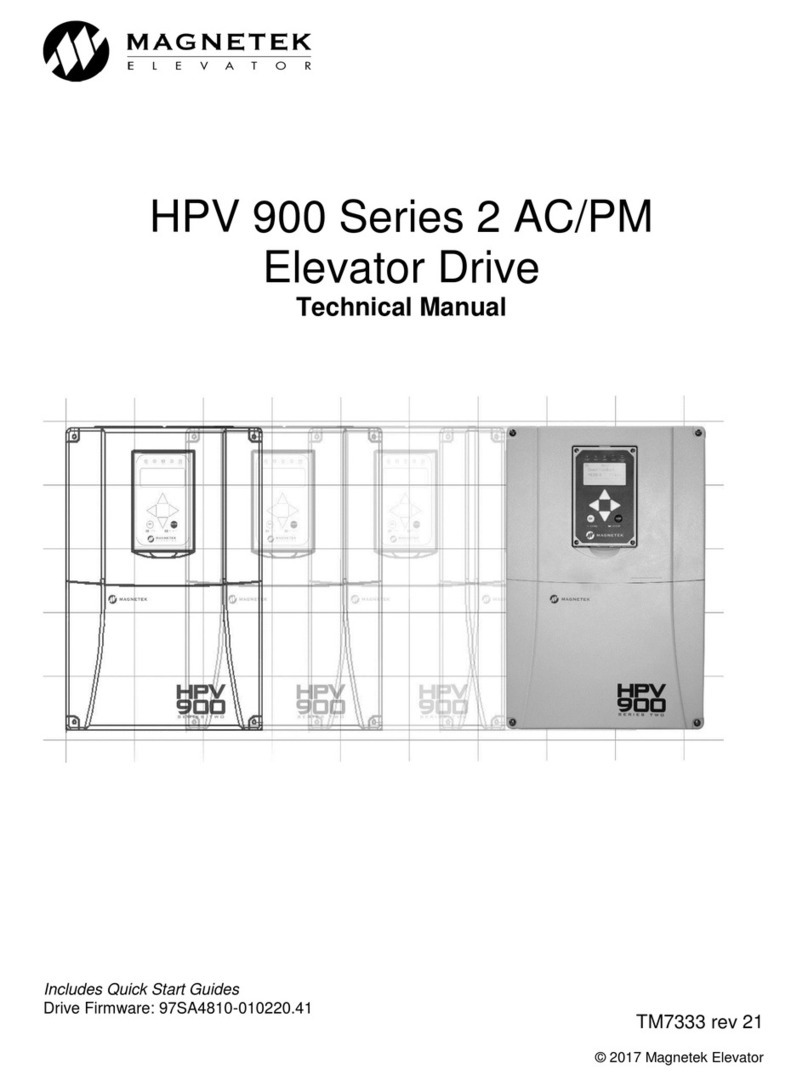THOR THPWM-30 User manual

THOR Manufacturing
7050 W. Palmetto Park Rd., Suite 15
Boca Raton, FL 33433
1-866-955-THOR
RD120808

SOLAR CHARGE CONTROLLERS
SAVE THIS INSTRUCTION MANUAL FOR FUTURE REFERENCE.
Copyright © 2021 THOR Manufacturing
Instruction Manual
and Warranty Information
THPWM
-30
TH PWM
-30
THPWM
-60

2
PRODUCT FEATURES
THPWM-30
1. Automatic system voltage identification
2. Charging program options for sealed, GEL and flooded lead-acid batteries and lithium batteries are available.
3. An upgraded 3-stage PWM charging algorithm is adopted. Application of an equalizing charge to the battery
periodically or when over discharged, can effectively prevent the battery from non-equalization and sulfuation, thus
extending the battery's service life (with the exception of GEL and lithium batteries).
4. With temperature compensation employed, charging parameters can be automatically adjusted (with the
exception of lithium batteries).
5. The product provides overcharge, over-discharge, overload protection, as well as short circuit and reverse-
connection protection.
6. A range of parameter settings and power-down saving functions are available, this requiring no repeated setting.
7. The user-friendly design of browser and dynamic interfaces ensures convenient and intuitive operations.
8. (An optional communication function) provides a RJ12 data port (output of TTL232 level or bluetooth signals),
with the data adopting the standard Modbus protocol, can be used together with our upper computer monitoring
software or mobile phone APP.
9. Boasting an industrial grade design, the product can function well in various tough conditions.
10. TVS lighting protection is adopted.
PANEL STRUCTURE
Communication port LCD screen
Solar panel Battery Load

3
PANEL STRUCTURE
FIVE LOAD WORKING MODULES
1. Pure light control (0): When sunlight disappears and the light intensity drops to the starting point (light control
off), the controller initiates a 10-minute delay (settable) to confirm the starting signal, and then switches on the
load for operation. When sunlight emerges and the light intensity reaches the starting point, the controller initiates
a 1-minute (fixed) delay to confirm the shutting down signal, and then shuts down the output to stop the load's
operation.
2. Light control + time control (1-14): The starting process is the same as pure light control. After operating for a
preset period of time (settable from 1 to 14 hours), the load stops operation automatically.
3. Manual Mode: (15): In this mode, the user can switch the load on or off by the keys, no matter whether it's day
or night.
4. Debugging mode (16): When the solar panel voltage is higher than the "light control off" voltage, switch off the
load immediately; when the solar panel voltage is lower than the "light control on" voltage, switch on the load
immediately.
5. Normal on (17): The energized load keeps the output state.
LCD Icon Indicated
Object State Meaning
Day recognition Steady on Day time
Night recognition Steady on Night time
Solar panel Steady on Solar panel indication
BOOST
Charging
state
Steady on Boost charging
FLOAT Steady on Floating charging
EQUALIZE Steady on Equalizing charging
Battery
Quick flashing Battery overvoltage
Slow flashing Battery over-discharge
Battery
SOC
4 dashes 100%
3 dashes 75%
2 dashes 50%
1 dash 25%
0 dash 0%
Load
Steady on Load turned on
Steady on Load turned off
Quick flashing Overload or short-circuit protection

4
LOAD WORKING MODE SETTINGS
In the load mode menu, press for 2s and the number (e.g. 15) will begin to flash. Press to adjust the
mode (from 0-17), and then long press again for 2s to complete and save the setting.
Note:
1. After parameter adjustment, if is not pressed and held long enough for exiting, the system exits to the
main menu after 12s, and the parameter that was set is not saved.
2. When the system is saving data, the screen may shake slightly. This is normal and the user may ignore it.
SAFETY ADVICE
CAUTION: When connected to a 24V system, the solar panel terminal voltage may exceed the limit for human
safety. If operation is to be performed, be sure to use insulation tools and keep your hands dry.
CAUTION: If the battery is reversely connected, the controller itself won't be damaged, but the load end will
have a negative voltage output, which may damage your load device. Take care not to let this happen.
CAUTION: The battery contains large amount of energy. Therefore, in no cases should the battery be short
circuited. It's recommended that a fuse be serially connected to the battery.
CAUTION: Keep the battery away from fire and sparks as the battery may produce flammable gas.
CAUTION: Keep children away from the battery and controller.
CAUTION: Follow the safety advice provided by the battery manufacturer.
LCD Display Mode LCD Display Mode
0Pure light control mode 9Light control +
time control 9 (hours)
1Light control +
time control 1 (hour) 10 Light control +
time control (10 hours)
2Light control +
time control (2 hours) 11 Light control +
time control (11 hours)
3Light control +
time control (3 hours) 12 Light control +
time control (12 hours)
4Light control +
time control (4 hours) 13 Light control +
time control (13 hours)
5Light control +
time control (5 hours) 14 Light control +
time control (14 hours)
6Light control +
time control (6 hours) 15 Light control +
time control (15 hours)
7Light control +
time control (7 hours) 16 Light control +
time control (16 hours)
8Light control +
time control (8 hours) 17 Light control +
time control (17 hours)

5
LCD SCREEN ILLUSTRATION
BROWSING MENU ON LCD SCREEN
1). Continuously press , the screen will display the following order: "main menu"---"solar panel voltage"---
"solar panel current"---"battery capacity"---"battery voltage"---"discharging current"---"charging amp hrs"---
"discharging amp hrs"---"temperature inside controller"---"load mode"---"load mode settings"---"error code", and
then back to "main menu" . If the keys are not operated for 12s, the system will automatically return to display the
"main menu"
Night time
indicator
Day time
indicator
Solar panel
indicator
Charging current
indicator
Battery
indicator
SOC
indicator
Discharging current
indicator
Load
indicator
Charging
State
System
Voltage
Units
Battery
Type
Mode
Settings
Data
communication
method
Fault indication
Main menu Solar panel voltage Solar panel current Battery capacity Battery voltage Discharging currenty
Error code Load mode Temperature inside
controller
Discharging amp hours Charging amp hours
Load mode setting

6
BROWSING MENU ON LCD SCREEN
1). When "load mode" is displayed, long press to enter into the load mode setting. Press to adjust
the mode, and hold for 2s to save and exit; or else, the system will not save the setting that was just made
and automatically exists the setting after 12s.
BATTERY TYPES, CHARGING VOLTAGES (LITHIUM BATTERY), OVER -DISCHARGE RETURN AND OVER DISCHARGE
VOLATGE SETTINGS
In the non-load menu:
1) When is long pressed, the first interface entered is for battery type setting, and the flashing one is the
battery type currently selected. Press to select among FLD/GEL/SLD/LI.
2) After selection, short press to enter into over-discharge return and over-discharge voltage settings; or the
first to enter charging voltage settin menu for lithium battery.
3) After parameters have been set, long press for 2s to save and exit.
Parameters shall be set according to the following rule: over-discharge voltage over-discharge return voltage = under-voltage
warning floating charging voltage boost charging return = equalizing charging voltage overcharge voltage; and two adjecent
values shall have a difference of greater than 0.5V.
CHARGING AND DISCHARGING OVERLOAD PROTECTION AND RECOVERY TIME
In the charging and discharging overload protection mechanism, the relation between overload current and
protection time is as follows: An overload current 1.25 times of the rated current initiates a delay of 30s before
starting protection; similarly, 1.5 times, 5s and 2 times is 1s.
Overload recover: Automatic recovery after 1 minute.
LOAD SHORT CIRCUIT AND RECOVERY
Short-circuit automatic recovery time: 1st time, 5s; 2nd time, 10s; 3rd time, 15s; 4th time, 20s; 5th time, 4 hours
or automatic recovery the next day; or long press to make the load resume output.
Select sealed lead-acid battery
In the non-load mode menu, long press
for 2s to enter and exit the following setting menu.
Select flooded lead-acid battery Select GEL battery Battery type selection Select lithium battery
Lithium charging point
voltage setting
Over discharge voltage setting Over discharge return voltage setting
System voltage setting
Set the system voltage:
12V/24V/36V/48V
(the biggest support voltage
according to the controller)
Set the system voltage:
12V/24V Auto
(Cannot support auto, not in the
menu.)

7
INSTALLATION INSTRUCTIONS AND PRECAUTIONS
1. The controller shall be installed securely
and its dimensions are as follows:
External dimensions: 164.0 x 103.5 x 47mm
Installation dimensions: 154 x 85mm
2. Installation hole
diameter: 3.2 (mm)

8
PRECAUTIONS
CAUTION: If it is a 12V system, the bottom left corner of the LCD display will show '12V', '24V' system will show
24V.
CAUTION: The first step is to connect the battery. If the connection is made correctly, the controller screen will
light up; otherwise, check whether the connection is correct.
CAUTION: The second step is to connect the solar panel. If sunlight is present and strong enough (the solar
panel voltage is greater than the battery voltage), the sun icon on the LCD screen is on; otherwise, check whether
the connection is correct. (It's recommended that the operation be performed under the debugging mode).
CAUTION: The thirds step is to connect the load. Connect the load leads to the controller's load output terminal
and the current shall not exceed the controller's rated current.
CAUTION: As the controller will generate heat during operation, it's recommended that the controller be
installed in an environment with good ventilation conditions.
CAUTION: Choose cables with large enough capacity for connection, in case too much loss incurred on the
lines causes the controller to misjudge.
CAUTION: The controller has a common positive pole inside. if grounding is needed, ground the positive pole.
CAUTION: It's important to fully charge the battery regularly. At least one full charging every month is
recommended and failure to do so may cause permanent damage to the battery. Only when in-flow energy
outpaces the out-flow energy can the battery be charged fully. Users shall bear this in mind when configuring the
system.
CAUTION: Check whether the controller's connection terminals is tightened securely; if not, it may suffer
damage when large amounts of current pass through.
ERROR CODE LIST
Code on LCD screen Corresponding error
E0 No error
E1 Battery over discharge
E2 Battery over voltage
E3 Undervoltage warning
E4 Load short circuit
E5 Load overload
E6 Termparture too high inside controller
E8 Charging current too high
E10 Solar panel input voltage is too high

9
COMMON PROBLEMS AND SOLUTIONS
Symptoms Cause and Solutions
LCD screen does not light up. Check whether the battery is correctly connected.
Incomplete display or no renewal on LCD
screen.
Check whether the ambient temperature is too low and whether the display
recovers when the temperature rises.
No charging with sunlight present.
Check whether the solar panel is correctly connected and contact is good
and reliable. Check whether the solar panel voltage falls below the battery
voltage.
The sun icon does not light up while the
solar panel icon does. The battery voltage is
normal but there is no output.
The load will be switched on automatically after 10 minutes
(set by the user)
The battery icon flashes quickly and there is
no output. System overvoltage. Check whether the battery voltage is too high.
The battery icon flashes slowly and there is
no output. The battery is over-discharged and will recover after recharged adequately.
The load icon flashes quickly and there is
no output.
The load's power exceeds the rated value or the load is short-circuited.
After the problem is solved, long press the key or wait until ir recovers
automatically.
The load and the encircling light ring stays
lit and there is no output
Check whether the power-consuming device is connected correctly and
reliably.
Other symptoms Check whether wiring is sound and reliable and system voltage is correctly
recognized.

10
SPECIFICATIONS
Model
THPWM-30 THPWM-60
Rated current 30A 60A
System Voltage Automatic recognition of 12 V / 24 V
Rated power 12V/ 450W 12V/ 600W
No-load loss < 13rnA/12V; < 15rnA/24V
Max. solar energy input voltage <55V
Max. voltage at the battery end <34V
Battery Type Flooded, Sealed SLD
Overvoltage protection 16V
Equalizing charging voltage 14.8V
Boost charging voltage 14.6V
Floating charging voltage 13.8V
Charging recovery voltage 13.2V
Over-discharge recovery voltage 12.5V (Settable with the keys)
Over-discharge voltage 11.0V (Settable with the keys)
Equalizing charging interval 30 Days
Equalizing charging time 1 H
Boost charging interval 2 H
Temperature Compensation -3.0mVfC/2V
Light control voltage Light control on 5V, light control off 6V (light control on plus 1V)
Light control judgement time 10 minutes
USB function Yes Optional
Bluetooth function Optional
Operating temperature -25C ° to +55C °
IP protection degree IP30
Net weight .85Lbs / 390g 1.43Lbs / 650g
Protection Functions
Battery plate reverse connection protection, battery reverse connec-
tion protection, charging battery board short circuit protection, charging
the battery open circuit protection, charging over current protection,
overload protection, load short-circuit protection, controller and over
temperature protection.
Dimensions 6.46 x 4 x 1.85"
164x103.5x47(mm)
7.45x5x2.1"
189.27x127.2x54(mm)

11
This manual suits for next models
1
Table of contents
Popular Controllers manuals by other brands
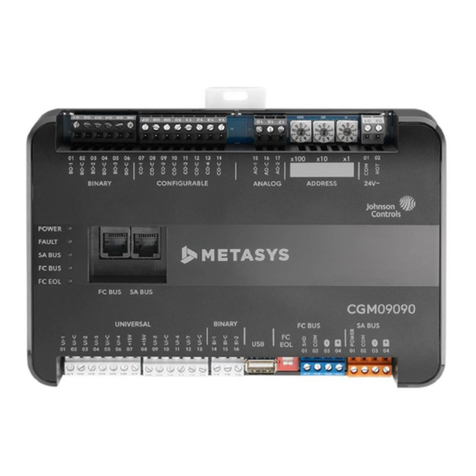
Johnson Controls
Johnson Controls CGM09090 installation guide
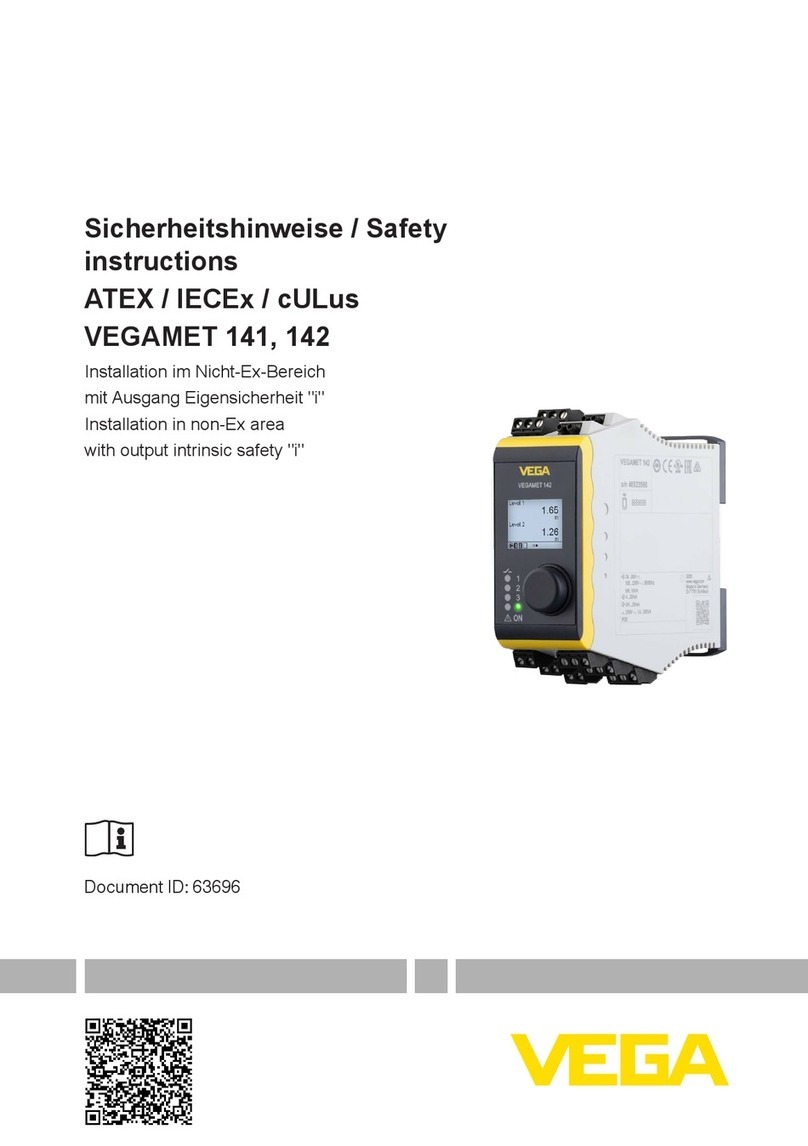
Vega
Vega VEGAMET 141 Safety instructions

Mitsubishi Electric
Mitsubishi Electric MELSEC System Q installation manual
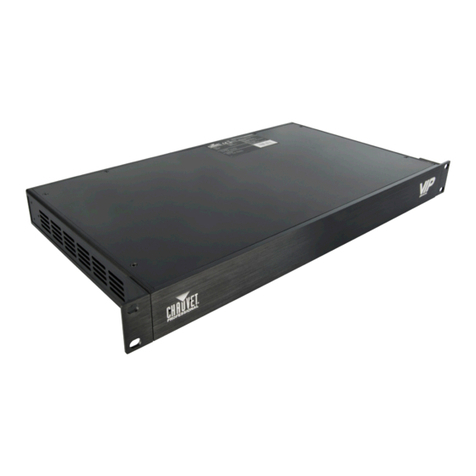
Chauvet Professional
Chauvet Professional VIP Drive 21L Quick reference guide
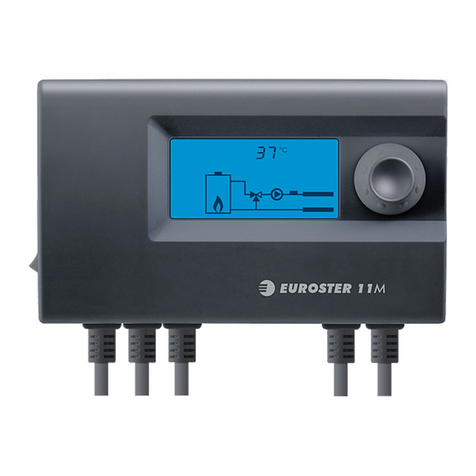
EUROSTER
EUROSTER 11M Operation and assembly manual

GRAUPNER
GRAUPNER MXS-8 Programming manual

